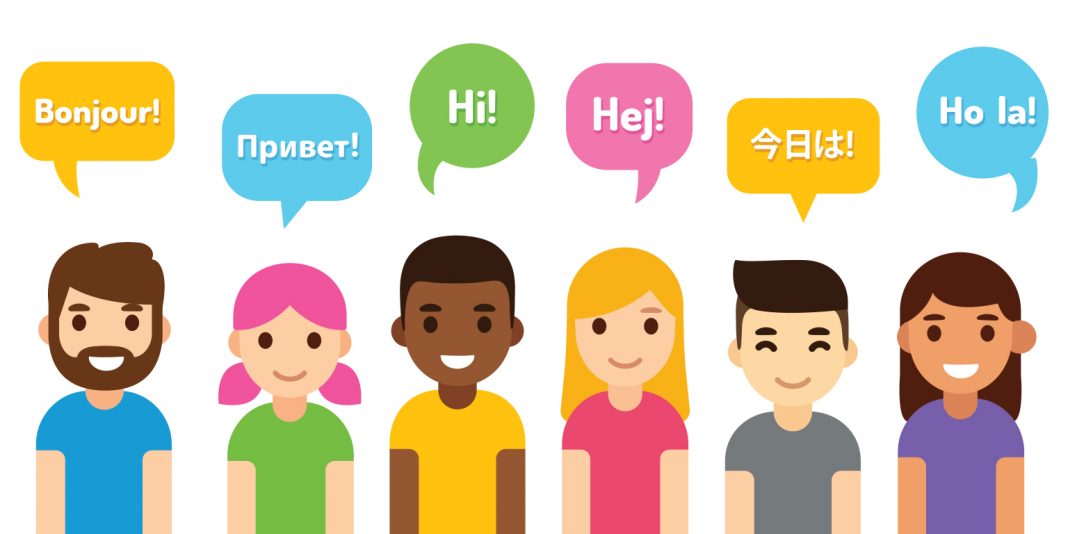A situation where a nursing student found themselves being a reluctant, untrained interpreter for a patient raised questions for a group of five second-year nursing students and prompted this literature review.
Interpreters are an increasing need in New Zealand hospitals, particularly in Auckland, which has a multicultural and very diverse society.
However, hospitals are predominantly English-speaking environments. Statistics from the last New Zealand Census showed that English was not recorded as the first language for 87,534 Aucklanders.
While this can create language barriers and impact on communication between staff and patients, accessing an interpreter for the patient can be difficult at times. This is due to confusion over whether an interpreter is needed or not, uncertainty around whether a phone or an in-person interpreter is more appropriate, and a lack of knowledge about accessing an interpreter in the first place.
These difficulties impact on the convenience of using an interpreter and can result in the medical team using someone present on the ward who speaks the language but is not trained as a medical translator. Second-year student nurses have witnessed this happening or have been asked themselves to interpret for both doctors and nurses (see the clinical scenario below).
_______________________________________________________________________
CLINICAL SCENARIO
Mr J, a 75-year-old Indian man who did not speak adequate English, was admitted to hospital with chest pain. He had a medical history of Parkinson’s disease and type 2 diabetes. Mr J had a tremor in his hands, which is a prominent symptom of Parkinson’s. After taking his vital observations and blood sugar levels, the nurse attempted to book an interpreter but was unable to obtain one.
The nurse then asked a student nurse, who spoke the same language as Mr J, to help interpret so the nurse could complete the assessment. Because Mr J wasn’t proficient in English, the nurse was entrusting the student nurse to interpret correctly. Although the student was not fully comfortable with interpreting, they felt obliged to do what the senior nurse asked them to do.
This scenario raises some questions:
- Is asking an untrained interpreter acceptable in a clinical setting?
- What are the factors that contribute to accessing or not accessing an interpreter?
This is an issue that can lead to nurses breaking the codes of ethics and creating miscommunication between patients and medical teams.
_______________________________________________________________________
Use of untrained interpreters
The first issue that will be discussed is the use of unqualified interpreters in a hospital setting. What the student nurse saw in the above scenario was that medical students, student nurses and health professionals are occasionally asked to interpret for patients. This puts the safety of both the patient and the medical staff at risk, along with breaching various patients’ rights.
Convenience of accessing an interpreter
The second issue that can arise from interpreter use in a hospital setting is whether accessing an interpreter is convenient for healthcare professionals. The student nurse involved in this scenario perceived a lack of interpreter availability on the part of the healthcare team. Accessing an interpreter also consumed a lot of time, therefore it was not convenient for them to use one.
Literature review
The challenges and issues presented by ethnic and language diversity have been reviewed in the research literature.
District health boards have policies in place to support large immigrant populations with limited English proficiency. New Zealand research has shown that health professionals who are aware of the DHBs’ policies show a greater use of trained interpreters.
However, often these policies are disregarded by healthcare professionals, as observed on clinical placements. Disregard for policies leads to the use of untrained interpreters, possibly because accessing a professional interpreter is not convenient.
There can be various underlying factors to a nurse or other health professionals’ decision to use an unqualified interpreter over a professional interpreter. Researchers have noted that there were three main factors: the availability of bilingual staff, perceptions of interpreting quality, and cost concern.
New Zealand has a diverse population with many bilingual staff and students, and sometimes the availability of bilingual staff can be seen as an opportunity to use them for interpreting. This is supported by another research article that elaborates on how bilingual medical students have been asked to interpret for patients in hospital. According to a 2008 New Zealand Medical Journal article, the services for interpreters are not developed enough to handle New Zealand’s diverse population.
While there is also no accreditation system currently in place for interpreters, telephone interpreter company Language Line has seen an increase in business since its establishment in 2003. Low-cost telephone interpreters are now more readily available and are steadily reducing the barrier to interpreting services in general.
Another factor potentially influencing interpreter use is knowing how to access interpreting services. Nurses in clinical settings play a main role in liaising with interpreters, but often lack the knowledge of how to go about it. According to other researchers, training on employing both professional and general interpreters increases the frequency with which interpreter services are used.
The use of interpreters is important in supporting the patients’ cultural identity while bridging the language barrier between client and healthcare professional and allowing for effective communication. The lack of interpreter use, therefore, not only ignores clients’ consumer rights under the Code of Rights but also puts their health at risk.
Ethical questions over using students
In clinical settings, using nursing students and other medical staff as interpreters leads to many ethical issues relating to consumers’ confidentiality and autonomy.
The Code of Health and Disability Services Consumers’ Rights states that patients have the right to be fully informed. Furthermore, the healthcare professional is required to make every effort to help the patient understand any information that is provided to them. The healthcare professional also needs to “where necessary and reasonably practicable” provide a competent interpreter for patients.
This is in the spirit of the Health and Disability Commissioner Act and Code as patients are given the opportunity to comfortably ask questions to help enhance their understanding and to ensure treatments are explained to them in detail, including the advantages, costs, and alternatives. Given this information through the services of an interpreter, the patients can make their own decisions.
Allowing patients to make their own decisions enhances patient autonomy. Autonomy is one of the key principles of the Code. An underlying value of autonomy is ensuring cultural safety which allows them to make the best choice.
Recommendations
There are various ways in which healthcare professionals can decrease the use of untrained interpreters and use appropriate interpreters in hospitals instead.
Such strategies include the use of flowcharts, like those in an interpreter clinical toolkit developed by University of Otago researchers**, which help to guide clinical practice to improve communication with patients of limited English proficiency.
The flowcharts could include scenarios and information boxes on when untrained interpreters, trained interpreters and telephone interpreters are appropriate to use, for example, and the benefits for each. Such flowcharts should be easily accessible around the ward and staff nurses educated on how to use them.
Having such resources would provide a guideline for nurses, but education should also be provided to improve clinical judgement when deciding what type of interpreter is needed in each situation.
The literature also shows evidence that training should be given for all staff on the ward, including how to determine the need for an interpreter, the type of interpreter and how to access trained interpreters. Offering specific training increases the likelihood that health professionals access appropriate interpreters and improves health professionals’ knowledge of and attitudes towards cultural competence.
Nurses should also be trained using interactive methods, such as role-playing, to practise communication skills based upon situations that may occur in clinical settings. Providing health professionals with visual guidelines, education and practices can enable them to recognise and acknowledge situations where trained interpreters are needed and have the confidence to respond appropriately.
Conclusion
This article puts emphasis on the importance of interpreter use and explores the problems that arise from not using one. It also discusses the policies and codes in place to promote the use of interpreters in New Zealand.
Several recommendations for improvement of health professionals’ understanding and use of interpreter service are also made, including providing health professionals with visual guidelines, providing appropriate education on how to use the guidelines, and improving clinical judgement skills through interactive methods like role-playing.
*University of Auckland nursing students Melanie Lee, Jessica Skelly, Hanna Willis, Shanjiazi Kong and Amarjot Sandher wrote and contributed this article for an assignment as second-year students in 2017.
**Gray B, Hilder J & Stubbe M. (2012). How to use interpreters in general practice: the development of a New Zealand toolkit. Journal Of Primary Health Care, 4 (1), 52-61.
FULL REFERENCES
(1) Brown, D., Edwards, H., Seaton, L., & Buckley, T. (2015). Lewis’s Medical-surgical Nursing: Assessment and Management of Clinical Problems. Elsevier Health Sciences.
(2) Stats NZ, (2013). Census QuickStats about culture and identity . Retrieved from: http://www.stats.govt.nz/Census/2013-census/profile-and-summary-reports/quickstat s-culture-identity/languages.aspx
(3) Diamond, L. C., Schenker, Y., Curry, L., Bradley, E. H., & Fernandez, A. (2009). Getting by: underuse of interpreters by resident physicians. Journal of General Internal Medicine , 24 (2), 256-262.
(4) Auckland District Health Board. (nd). The Interpreter Service . Retrieved from: www.adhb.govt.nz/downloads/services/interpreter-manual.pdf
(5) Gray, B., Stanley, J., Stubbe, M., & Hilder, J. (2011). Communication difficulties with limited English proficiency patients: clinician perceptions of clinical risk and patterns of use of interpreters. The New Zealand Medical Journal (Online), 124(1342).
(6) Kale, E., & Syed, H. (2010). Language barriers and the use of interpreters in the public health services. A questionnaire-based survey. Patient Education And Counseling, 81(2), 187-191. http://dx.doi.org/10.1016/j.pec.2010.05.002
(7) Bischoff, A., & Hudelson, P. (2010). Communicating With Foreign Language–Speaking Patients: Is Access to Professional Interpreters Enough? . Journal of travel medicine , 17 (1), 15-20.
(8) Yang, C. F., & Gray, B. (2008). Bilingual medical students as interpreters–what are the benefits and risks?. The New Zealand Medical Journal (Online) , 121 (1282).
(9) Gerrish, K., Chau, R., Sobowale, A., & Birks, E. (2004). Bridging the language barrier: the use of interpreters in primary care nursing . Health & social care in the community, 1 2 (5), 407-413.
(10) Hsieh, E. (2015). Not just “getting by”: factors influencing providers’ choice of interpreters . Journal of general internal medicine, 30 (1), 75-82.
(11) Health and Disability Commissioner. (1996). Code of health and disability services consumers’ rights. Wellington: Health and Disability Commissioner.
(12) Medical Council of New Zealand. (2011). Information, choice of treatment and informed consent. Retrieved from: https://www.mcnz.org.nz/assets/News-and-Publications/Statements/Information- choice-of-treatment-and-informed-consent.pdf
(13) Gray, B., Hilder, J., & Stubbe, M. (2012). How to use interpreters in general practice: the development of a New Zealand toolkit. Journal Of Primary Health Care , 4 (1), 52-61. http://dx.doi.org/10.1071/HC12052
(14) Diamond, L., & Jacobs, E. (2010). Let’s Not Contribute to Disparities: The Best Methods for Teaching Clinicians How to Overcome Language Barriers to Health Care. Journal Of General Internal Medicine. 2 5 (S2), 189-193. http://dx.doi.org/10.1007/s11606-009-1201-8
(15) Beach, M. C., Price, E. G., Gary, T. L., Robinson, K. A., Gozu, A., Palacio, A., … & Powe, N. R. (2005). Cultural competency: A systematic review of health care provider educationalinterventions. Medicalcare, 43 (4),356.





















